

 The Accurate Reloading Forums
The Accurate Reloading Forums  THE ACCURATE RELOADING.COM FORUMS
THE ACCURATE RELOADING.COM FORUMS  Hunting
Hunting  Muzzleloading Big Game Hunting
Muzzleloading Big Game Hunting  Cleaning troubles.
Cleaning troubles.Go  | New  | Find  | Notify  | Tools  | Reply  |  |
| one of us |
SO I get this private message from a guy a while back. I am not adding his name to protect the innocent. Anyway he asked me how I get my guns to fire every time. So I sent him a note. I am going to copy and paste this in case anyone want to see how I do my cleaning. He used this method and his guns went to shooting on the first cap. I am sure this would work on inlines as well but I use this on my TC Renegades and Hawken. Ron ____________________________________________________________ What I am thinking about your procedure is you get the bottom of the barrel a little too moist. Then you fire the caps into the moist bottom and things get sticky and nasty. You pour the powder in and maybe the first few tiny grains are into the moist sticky cap powder mixture. That is not a good mix. Ok let me go on farther. Here is my procedure to load. I get to the range with a gun that has oil in the barrel. I use a jag and push a dry patch down and pull it out. I turn it over and push it down again and leave it there. I use #11 mag caps. Put one on and fire it into the patch. I do this 2 or 3 times. I pull the patch out and make sure it is burnt good. If you pop a cap and it doesn’t look like this pop another one until the oil is gone. By using the patch to catch the fire and the oil as it blows down the barrel it is ready to fire. At the peak of hotness. 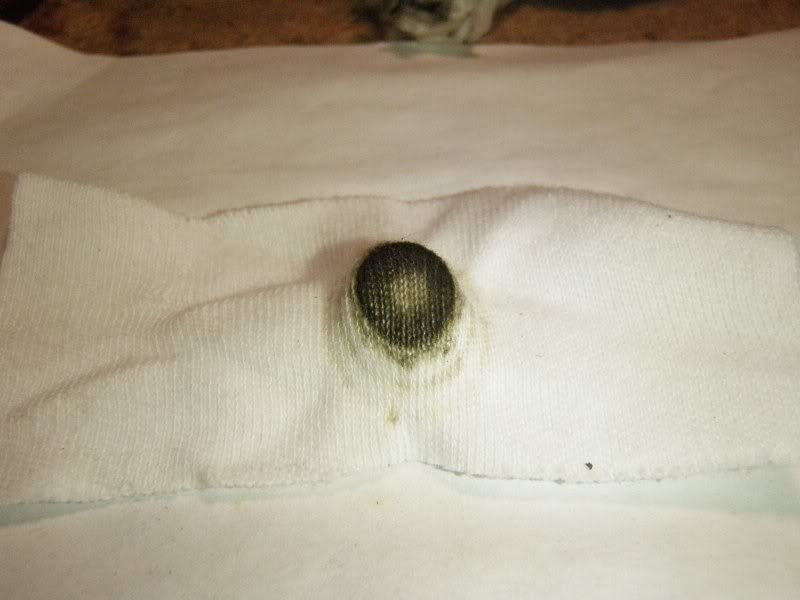 Now It is ready to load. I pour the powder down and lean the rifle over with the lock down. I tap the rifle on the butt of the stock to get the grains of powder to settle into the nipple area. Then I finish loading. OK between shots I clean the rifle. I squirt some windex on a patch but not too much. I swab it, and repeat if I have to. Then I put a dry patch on and push it down and pull it out. Turn it over and push it down again. NOW!!! I Fire 2 or 3 caps again with the patch on the jag. Check to be sure the patch is burnt. If so load again if not fire a couple more caps. 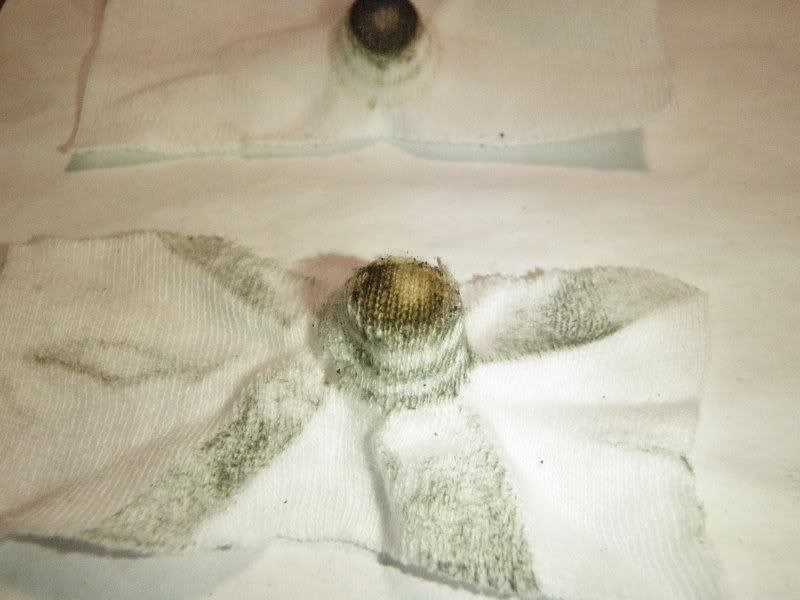 This patch above was not burning well enough so I popped a couple more caps to get the gunk and windex out. 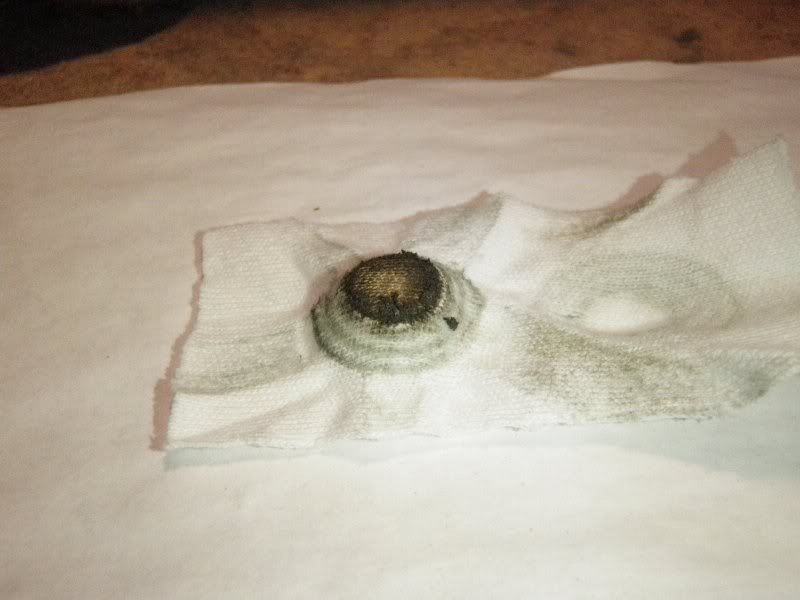 I have seen sticky black thick stuff stuck on the bottom of the patch that would have fouled up the load if the patch had not caught it. Here is a couple of pictures that show the gunk that would have blown back down the barrel. This wet sticky gunk is what causes most guys to have hang fires and even not fire at all. 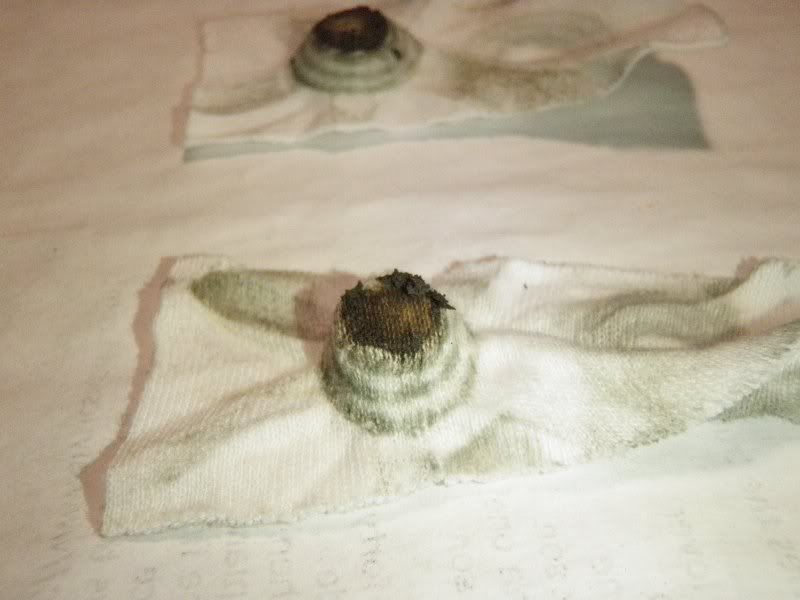 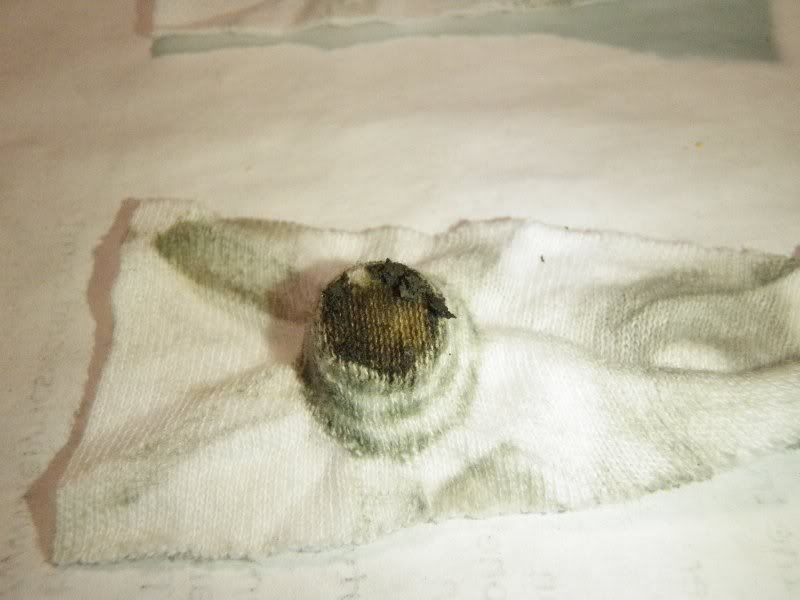 I think firing caps into the patch makes a huge difference. Ron | ||
|
| one of us |
Ron do you windex as your cleaner and nothing else? | |||
|
| new member |
One of the best things I learned over 20 years ago is storing my traditional muzzleloaders, both percussion and flint, muzzle down in my gun rack or safe. I oil the hell out of the barrels to prevent rust, but by storing them muzzle down the oil does not pool by the breech plug, flash hole or nipple. When I get to the range I run a couple patches dampened with alcohol down the barrel to degrease the barrel and then I run a couple dry patches down. With the percussion rifles I pop a couple caps and make sure the flame channel is clear, but I have never done this with a patch down the barrel--I'll have to try that. Thanks | |||
|
| one of us |
257, I only use windex when cleaning during a shooting session. When I get home I clean with soap and water followed up with Rem oil. Ron | |||
|
| One of Us |
I do the typical cleaning followed by a light oil patch. Prior to the next shooting session I wipe the bore several times times with a patch soaked in denatured alcohol. Gets rid of any oily gunk that may contaminant the powder or mix with the powder to cause excessive fouling. | |||
|
| One of Us |
If I am going deer hunting, I fire a cap and then fire a second one with a few grains of powder down the barrel. Once this fires, you know it's dry. If I am shooting target or squirrel hunting, I don't do the powder cap thing and in decent weather, don't have a problem. Kenny | |||
|
| one of us |
So you fire a cap and then another one with powder. SO you have a fouled barrel. I don't like to start a hunt with a fouled barrel. SO is it too much money to use a patch instead of powder? | |||
|
| one of us |
Ron, it definitely works on inlines as well and it's basically what I used to do. I'm so confident of the clean and dry status of the barrel and breechplug that I no longer bother to fire a cap or primer before loading. I use a 99% pure alcohol flush followed by dry pressurized air. Closed action inlines can be so quiet when using your method (even with a 209 primer) that you might wonder if it went off. You can be sure and amused by watching the ramrod push out of the bore a few inches. WHUT? | |||
|
| One of Us |
Good advice ! "Let me start off with two words: Made in America" | |||
|
| Powered by Social Strata |
| Please Wait. Your request is being processed... |
|

Visit our on-line store for AR Memorabilia

